The following excerpt appears in Hard Prairie Volume 1, available now! To purchase your copy, please click the link on our homepage!
Words: S. Trent Rosenbloom
At this point, we had no idea who we were looking for. We had swept all the runners. There shouldn’t have been anyone left behind us. We were beginning to worry that perhaps they had slid down the side of the mountain. This was a real possibility given how slick and steep the trails were. Eventually, we were able to raise the crew of the injured person on the radio and they confirmed that they were, in fact, on trail. However, this struck me as odd. If I was with the first response rescue team, how was it they had come across a radio? Was there another support team already with them?
After backtracking for two miles, I came across my answer. The injured person was not a runner at all, but a member of the Appalachian Mountain Rescue Team that we’d encountered earlier, a tough 61-year-old former marine. He had taken a bad step on a slick rock while wearing a heavy pack. He heard a pop above his right knee and fell. Now unable to stand up, he was in tremendous pain around his distal femur. By the time I reached him, his other team members had him immobilized, warmed, and as comfortable as one could be under the circumstances–a tarp protecting him from the rain. He was also, by then, reasonably medicated.
Given the mechanism of injury and the location and severity of the pain, we had reasonable concern that he had fractured his femur. A femur fracture is a serious injury that cannot just be splinted or walked off. Rather, it requires true immobilization and extraction.
We were in for a long day.
By Morgan Mader
Last July, having just set a new 100-mile course record at Cry Me a River, James Solomon was killing time waiting for me to finish my own race. Sitting with some friends at the aid tent, he was being casually interviewed by Runners of the Corn podcast host, Jen Heller. Banter bounced around James’ race resume and settled on his successful finish of the Potawatomi 150 earlier in the year. Jen noted that the 150’s current record holder was David Goggins, arguably one of the most recognizable figures in the sport and no stranger to testing his limits.
Without hesitation, James said :“Yeah, until I have it.”
The gauntlet had been thrown.
What followed was a year of training designed specifically to deliver on what he promised.
It takes a very specific mentality to speak with such brazenness. Goggins’ course record was over 7 hours faster than what James had run in 2022. He knew he had work to do. Added pressure mounted as the local ultrarunning community started debating whether James would ultimately accomplish it or eat his words. Runners of the Corn even went so far as to establish a wagering system in which people could donate to Goggins’ favorite charity, the Special Operations Warrior Foundation, if James broke the record. Money was now on the line.
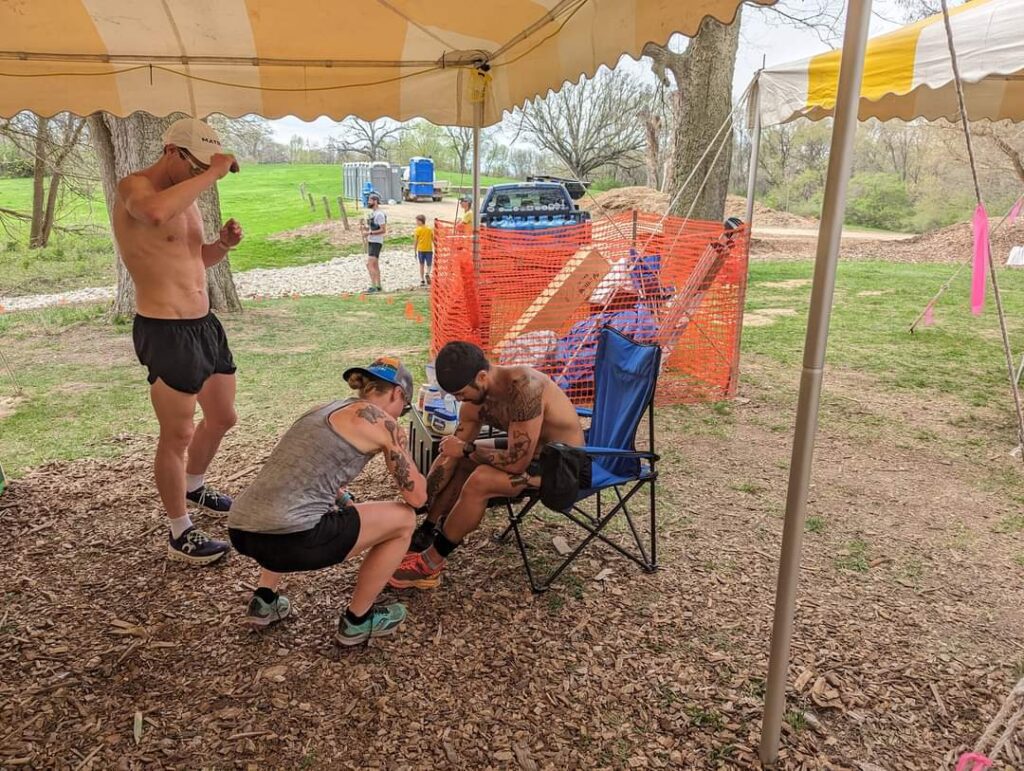
For several months, James’ pursuit was a hot topic of discussion. Trail friends, race acquaintances, and social media all chimed in on James’ training plan. Everyone seemed to have an opinion on what it would take to get this done.
If talk is cheap and action speaks louder than words, then the lead-in to this year’s Potawatomi was all action.
James chose to race more often prior to Pot, executing an extremely successful series of timed races over the winter. In January, he set a new course record at Chill Billy, followed a month later with another course record at the Bald Unyielding Twilight Trail Trail (affectionately known as B.U.T.T.T). He often trained in freezing temperatures with eye-watering wind chills. One weekend he ran 64 miles around Lake Geneva, suffering through shin-deep snow and 25-mph winds.
And I watched him through all of this.
I was there at 2:45am when he woke for his morning run. I was there at the gym working through the push-pull sled and burpee sessions. I was there in the sauna with him 5-6 days a week for 30-minute dehydration bouts. I was there getting lapped by him as we ran hill repeats up Mt Hoy. And I was also there when we discussed race strategy, hydration and nutrition plans, and recovery techniques. We’re a team. This goal was as important to me as it was to him. I was the unwavering voice of support; the drive behind what we were going to accomplish.
Race weekend always seems eons away until it's suddenly upon you; however, we were prepared. James was in amazing shape come race day, certainly ready to make a play for the record.
I typically miss the start of James’ race as I’m out running the 50-miler. I finished just before James completed his fortieth mile. Looking to maximize my available trail time, my transition from runner to crew was nearly instantaneous. James is fully capable of handling himself, but I knew my time would come.
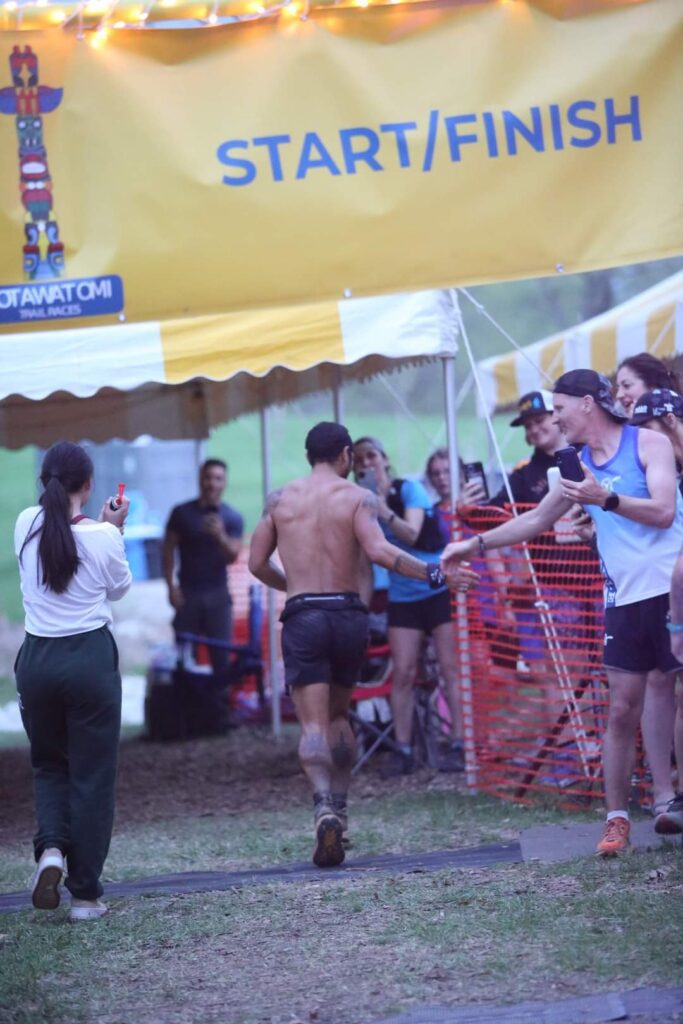
At the start of the weekend, the weather was some of the best that Potawatomi had ever had. It was notably hot, with temperatures in the 80’s during the afternoon, and the trail was dry and runnable. Even the creek crossings were of no consequence. Race execution was going as planned, if not better. People kept asking me about James’ pace, which was distinctly fast, and whether I believed he could maintain that for the duration. If he kept it up, he would break Goggins’ record with ease.
We had pacers lined up for the final 50 miles. James didn’t anticipate needing anyone before then. Around mile 70, he experienced his first low. With his pace being so systematic and fast, we were afforded some time to troubleshoot and focus on rehydrating. It was at this time that Daniel Williams arrived. He had finished the 200-miler the year prior and was interested in pacing. He didn’t know that he was about to be recruited to run 30 miles with James.
The night flew by as fast as the miles. After that brief low, James started to tighten his pace again, growing faster with each loop. As he transitioned from pacer to pacer, all of whom were excellent at executing what I had advised, James approached his goal with more and more drive. We were like a machine, addressing nutrition and hydration needs with precision. I would only have a few minutes with James during the transitions—only a few minutes to evaluate his mood, and what he needed, and deliver some sharp and focused words of motivation and support.
“James, you didn’t train the way you did for the last year to not get this done,” I told him. “Everything has been for this moment, these last miles.”
Saturday morning was clear and crisp, transitioning into another warm afternoon. As I tracked James’ loops, the anticipation began mounting in my chest. He wasn’t just going to break the record; he was going to break it with authority.
Watching him take off down the trail for his last loop late Saturday afternoon, I glanced down at my watch. Only 24 hours ago, I’d finished my own 50-miler. Since then, I added an additional seven miles to my step total. That’s how much running around it takes to crew a champion.
With James’ entrance song picked out for his arrival at the finish line, I grabbed a walkie-talkie and headed out to find him on the course. Race Director Mike Kelsey had asked that I radio him when James was drawing near. By now, everyone knew that the record would be broken. What wasn’t known, however, was by how much?
Sitting on a log, cheering on passing runners, I had the walkie primed and ready. Mike checked in several times, and each time I reported back a negative sighting.
“You’re killing me, Morgan.” He chuckled.
“HE’S killing ME.” I smiled and shook my head.

When I say that those 30 minutes spent sitting on that log were the tensest minutes I have ever spent doing nothing, believe me.
Then, in a blink, he was there, coming up around a tree. I let out a relieved and triumphant cheer for James and immediately reported that he’s in sight. Now on my feet, I bolted up through the trail to the open field of tents that line the course up to the finish.
“HE’S COMING! EVERYBODY GET READY, JAMES IS COMING IN!”
Moments later, James was within sight. He rang the large cowbell posted for racers finishing their last loop. Wild cheering mixed with the Metallica booming through the trees. With a warm and victorious welcome, Mike Kelsey announced, “JAMES SOLOMON! The new 150-mile record holder, a record held since 2008 by a guy named David Goggins. Welcome back JAMES!”
My body was riddled with goosebumps. I ran alongside James, pulling back just enough to allow him the finish he deserved, all the while savoring the stunning view of spectators cheering and clapping and high-fiving James as he ran past. It was a hero’s welcome and my heart warmed at the sight of it.
James finished in 31 hours and 27 minutes. He cut more than 10 hours off of his time from the previous year and smashed the course record by more than 2 hours. At that pace, he might’ve lapped Goggins.
While much of the hype and publicity was around beating David Goggins’ record, it was never really about that. Goggins is an authority on discipline, toughness, and goal-setting, all of which makes James’ victory undoubtedly richer, but, in the end, it was always just about James beating his old time. James just wanted to do better than he did before. He’s simply grateful that Goggins set the bar so high.
It's just that now, that bar is higher.
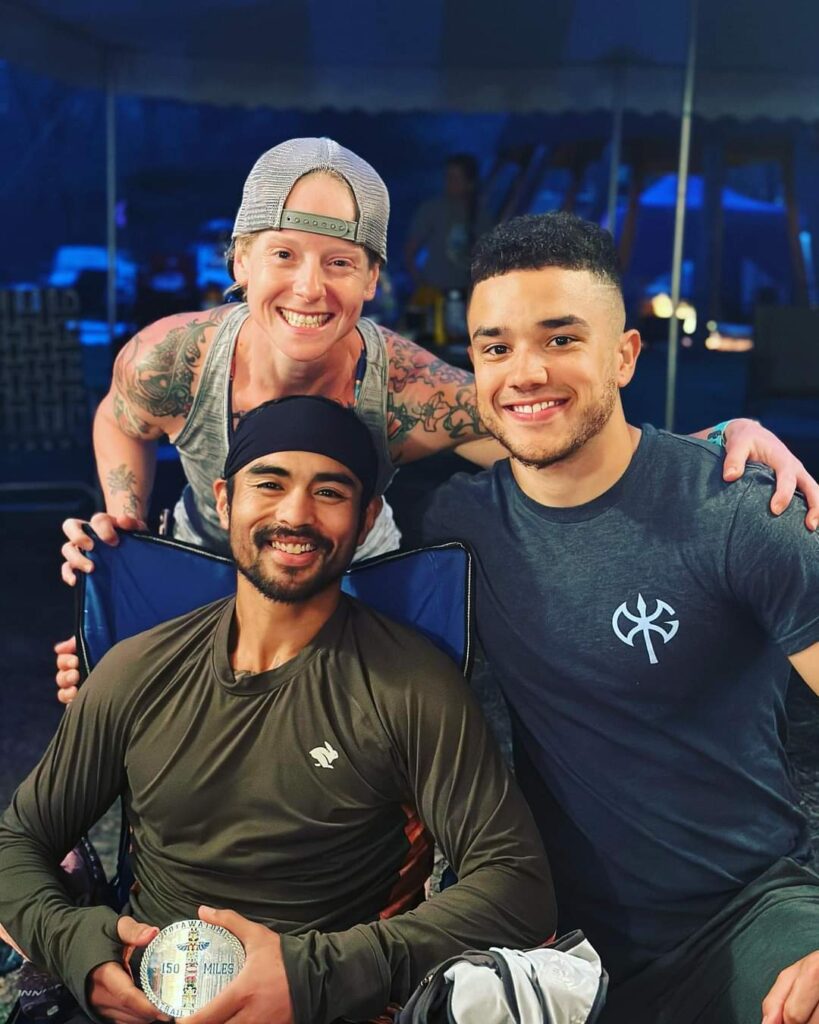
A special note is due to the individuals who donated their time and legs to pacing James during this event. We appreciate you: Daniel Williams, Lily Medina, Matt Hussung, Taggart VanEtten, and Chris Allen.
Photos provided by Ralph Deene Milam (Featured Image) and Morgan Mader.
I’ll move to write something personal only for the words to scatter like spooked minnows. Just—poof!—gone, as if the plug has been pulled on my thoughts. Sometimes I liken my brain to an old switchboard, a long bank of varnished hardwood outfitted with jacks and junctions and cables. Only my switchboard is operated by a gremlin.
And it’s made a mess of all the transfers.
Michael, I’ve been trying to write this for weeks now. But the words—the right words—have evaded me. Like minnows, they’ve vanished. A simple thank you seems slight; I feel like I owe you so much more than that. And, worse, I feel it’s long overdue, which, frankly, is making me anxious. So, having grown impatient waiting for the right words to gather, I’m just going to plow through—minnows and gremlins be damned—because, at the very least, you did teach me a way to do that: Relentless forward progress, right?

So, here goes:
Michael, I get it now. Your methods, your advice, your mantras (Go slow to go far, for example), they’re clearer in retrospect. Slowing down, learning how to hike effectively, finding that purposeful, sustainable pace, I get it. All the questions you asked and data you requested—previous splits and topographical profiles and nutritional information—all the useful material that I had previously failed to collect, I get it. Establishing a Plan A and a Plan B, then planning for both of them to go to shit, I get that now too.
And learning to let go?
You and I have already talked about that.
However, if there is an overarching takeaway from Potawatomi, it’s this: Michael, as my crew chief, you taught me that what I was lacking, more than ability or desire or patience, was respect. I had no respect for what I was trying to do. I didn’t respect the distance or the land or the process. Each DNF had given me new information that I could’ve applied to each subsequent attempt; yet I never capitalized on any of it, almost actively refusing to make a plan.
You changed that.
What’s more, you also showed me how to respect others enough not just to ask for their help, but to trust-fall into it.
Which brings me to Tam.
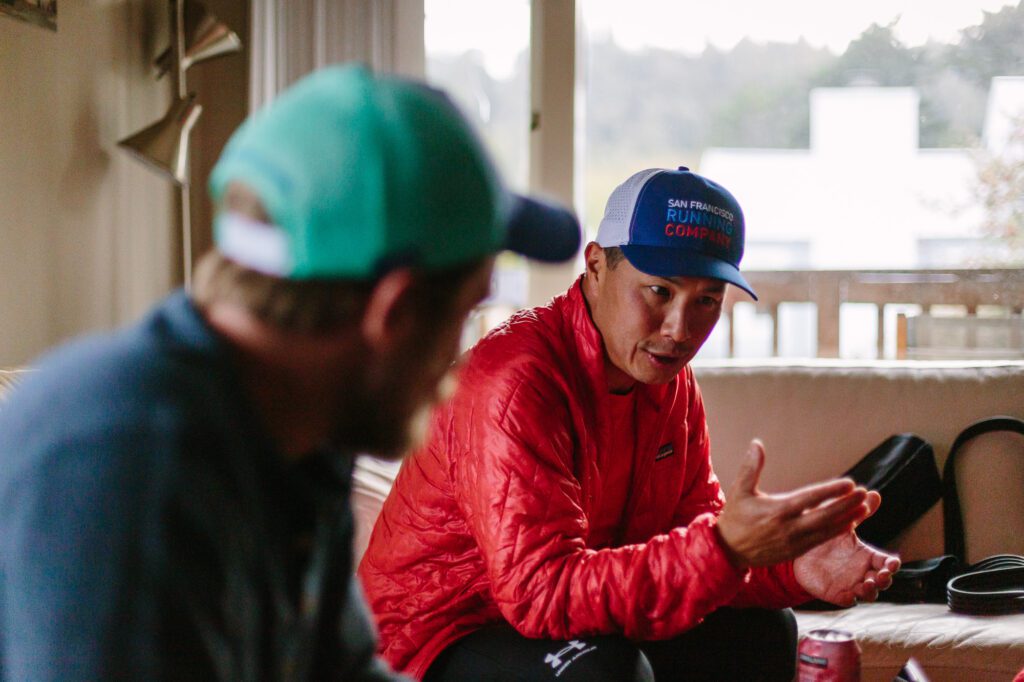
Michael, when we met in that apartment in Mill Valley, I had difficulty accounting for what I was seeing and hearing. More than once, I found myself untrusting of the room—it’s dimensions and dynamic, who was coming and going, what was being offered and said. Sometimes I was unable to discern whether I was being put upon or not. Everything felt over-the-top, almost too idyllic. Mill Valley’s tucked-away beauty. Kendall’s kingly offerings of food. The mellow, predawn sparkles off the bay. The vibe was communal and calm, yet focused, and—honestly—I struggled to relate. But that’s on me. You would be away in the bedroom, or at the table eating noodles, and those who came to run with you—having only just met me, knowing only that I was a writer—would open up unprovoked and start talking. Michael is so inspiring, they’d say. So selfless, they’d say. He’d do anything for anyone, they’d say.
And, like a cynical asshole, I kept thinking, No one is this unselfish.
But, Michael, I was wrong.
All those people who came out to support you on Tam were not only right, but mirrors reflecting your boundless generosity and support. I hope whatever your next adventure is, big or small, that I might be able to repay your kindness and join you. Not as a writer or an acquaintance, but as a friend.
A true friend.
Relentless forward progress. It works. Look at all the minnows, Michael.
They’ve come back.

Photos: Tim Roberts @forbydigital
Did U Love Today? is a short video about taking time to slow down and explore. You may find yourself asking some interesting questions.
Miles to Go is a short documentary about Paige Roberts—a busy mother of four young boys—who, in 2022, set her sights on completing her first ultra-marathon, the Fancy Nonsense 50k.
Less than a year later, at Six Days in the Dome, he would establish the overall record outright, running 100 miles in 11:19:13.* For Zach, running fast over exceptionally long distances is an art form, and he is one of its preeminent practitioners.
He is also a native Midwesterner.
Born in Minnesota, Zach moved to Wisconsin at age eight, eventually enrolling at the University of Wisconsin—Stevens Point, where he ran track and cross country. In 2015, after a few years spent teaching, he put his career aside to focus primarily on running. He headed west to Sacramento, then south to Phoenix, and now resides in Texas.
Here, Zach reflects on his record-setting performance at Tunnel Hill, sharing what initially piqued his interest in the race, whether he plans on returning, and if he has any intention of reclaiming the 100 mile record from Aleksandr Sorokin.
* * *
How were you first made aware of Tunnel Hill?
When I got into ultrarunning I learned that running flat, more controllable courses were a little more interesting to me. Tunnel Hill popped up on my radar when I was looking around at races that were not on a road or track but were still really fast. The year I ran it was the year after Camille set the world record there. That was another thing that put it on my radar. I was like, “Okay, this is a fast course.” When I was planning out my race season for 2018, I had a good spot for that one and decided to give it a look. It’s also unique in that it’s basically straight shots. You’re essentially running straight all day long, which is a little bit more conducive for running fast. The other thing that stood out to me, having grown up in the Midwest, is that the temperatures at Tunnel Hill will most likely be around forty to sixty degrees. The course is kind of enveloped by trees so it’s pretty sheltered relative to what’d you get in an open field. Those things add up to pretty fast running.
How much course recon did you do for Tunnel Hill?
I knew what that type of terrain felt like to run on, so I had an idea of what to expect. I did go out the day before and check on a couple spots. I wanted to see how it looked as opposed to how it was advertised. You get people posting pictures of the race, so you’re kind of able to see a little bit on social media. I knew it was there, but the thing I actually needed to experience was the hill. Relative to what you get on a lot of mountain trails, its not really that daunting. But compared to the really flat sections of the course, it’s worth noting.
Is there anything you might do for a race like Tunnel Hill that you wouldn’t do for something like Six Days in the Dome?
It would be pretty similar actually. The biggest difference with Six Days in the Dome is you’re on a 440-meter track. If you mess up aid, it isn’t very consequential. A couple minutes later you can correct the issue. Tunnel Hill is really easy to crew for, relative to most trail races. You see your crew quite often. But you do have to be a little more precise. If you mess up your transition, you’re probably going to pay for that for thirty or forty minutes. You have to be more precise with what you want or need as you move through those things. That may alter how I prepare during training, especially if I am going to be relying more on aid stations. In that case, I’ll pay more attention to what the race is going to have at their aid stations. I’ll practice with the foods and fluids I’ll be taking in, versus something like Six Days in the Dome or a race that has heavy options. In those races, I’ll be using a lot of my own stuff, pre-mixed and handed off to me by my crew. Tunnel Hill and Six Days in the Dome, from a mechanical standpoint, differ in that I’ll do my long runs on a track for Six Days in the Dome. I want to dial in the mechanics and stabilizer muscles that will be required to be turning that often. Those mechanics will be almost identical all day long, which is nice in the sense that it’s easy to replicate. But you do really hammer the same areas over and over on a course like that. You want to be specifically prepared. At Tunnel Hill, if areas that are primary points of impact start bothering you, you just have to work through them the rest of the day. There just aren’t a lot of workarounds.
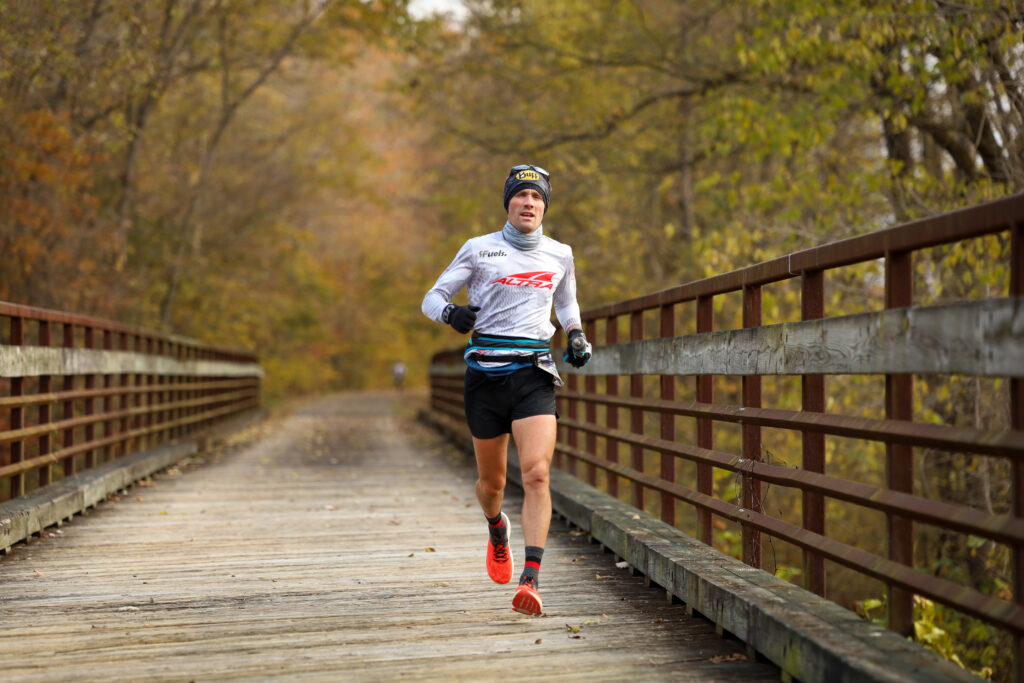
Did you go there to establish the record?
Yeah, I thought it was definitely in range. I think I was even targeting under twelve hours, which—with the right pacing—I think is doable. Tunnel Hill is probably closer to an eleven-and-a-half-hour course on a really good day. I went in there in good enough shape to probably break twelve hours, if things had gone well. I think I went out just a little too fast. I probably went up the hill too fast the first time. The nice thing about Tunnel Hill from a speed standpoint is, if you do pace it just right, you make that final turnaround at about eighty-nine miles and you get that gradual downhill coming home. So, if your legs are feeling good, you can rip through there. On a perfect year, I think I’d be splitting mid-sixes down that hill, versus the mid-sevens that I was doing in 2018. That’s where I could make up some time, by going a little slower in the beginning and making it up with a faster close.
Do you see another Tunnel Hill race in your future?
I think I will. I was less sure about it before this year. Now that I live in Texas, I have the Brazos Bend 100 nearby and they’re on a competing timeline. Although Brazos is a fast course as well, it’s so much more of a coin flip with weather. Of course I say this the year it snowed at Tunnel Hill. But that’s going to be a one-in-ten occurrence there, whereas with Brazos it can get pretty humid. That kind of stifles any real speed attempts, relative to the dry, cool air you’re going to get at Tunnel Hill most years. So, I think I’d like to go back at some point. Just to see if I can pace it a little bit better and crack twelve hours there.
Do you foresee Tunnel Hill remaining a prime destination for record seekers?
Yeah, I think so. When Camille ran 12:42 there in 2017, that put it on the map. And Steve Durbin did a good job of marketing the race as well. He said, “We have consistency here. It’s very predictable most years. It’s obviously very fast.” He made sure he checked all the boxes. He got the course properly certified. There is doping control there. When I went there the following year and ran 12:08, that was an added carryover from Camille’s run. That kind of solidified it.
Do have any intention of going after Aleksandr Sorokin’s record?
The 100-mile record is probably the one I would focus on soonest. I really want to do it again, especially with shoe technology having changed. When I ran 11:19 in 2019, I was basically wearing a marathon racing flat. Now most brands have some form of super-shoe technology available. I would like to give it another go with that. It does seem like there is a pretty good advantage there. When you start extrapolating out to 100-miles, I think the shoes alone could potentially—with a similar performance—put me under eleven hours. With a little more experience, and a real good build-up, I think I could take a shot at what Sorokin did when he ran 10:51.
*Aleksandr Sorokin broke the 100-mile record in January 2022.
Photos: Chad Colson (@chadcolson) and Micki Beth Colson (@mother_runner_micki)
Some finished with ruddy cheeks, numb or needling from exposure. And some finished with their dry lips split open and their scalp steaming like they’d run with their head on fire.
But they finished, and most did so smiling.
Hats off to all those who braved the frigid temps this past Saturday at Ornery Mule’s Frozen Gnome 10k & 50k. You earned those rad-looking medals!

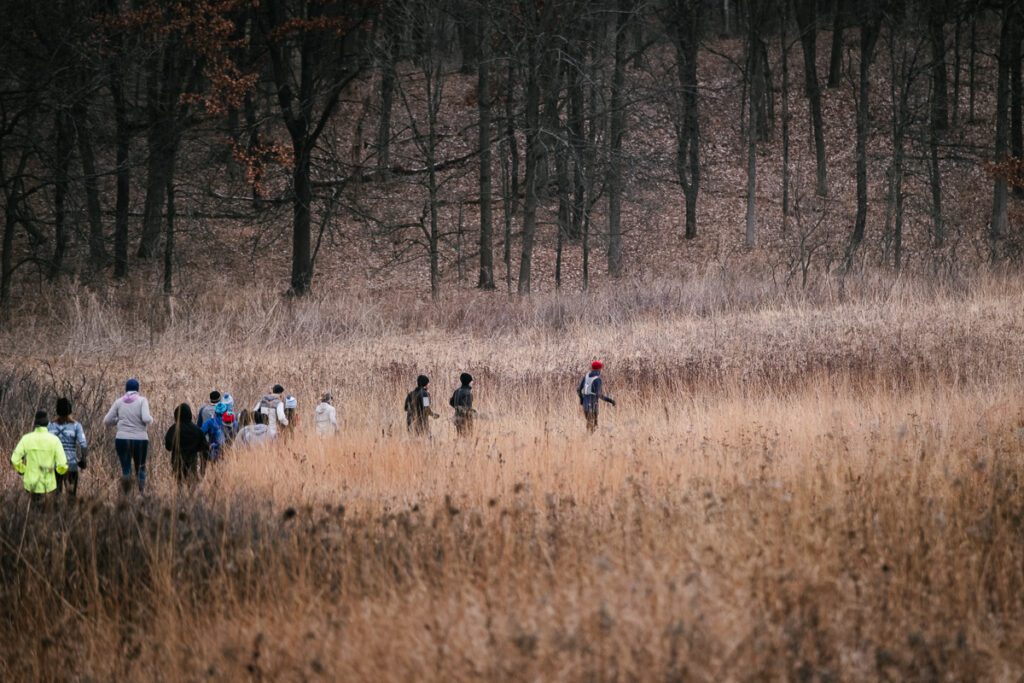



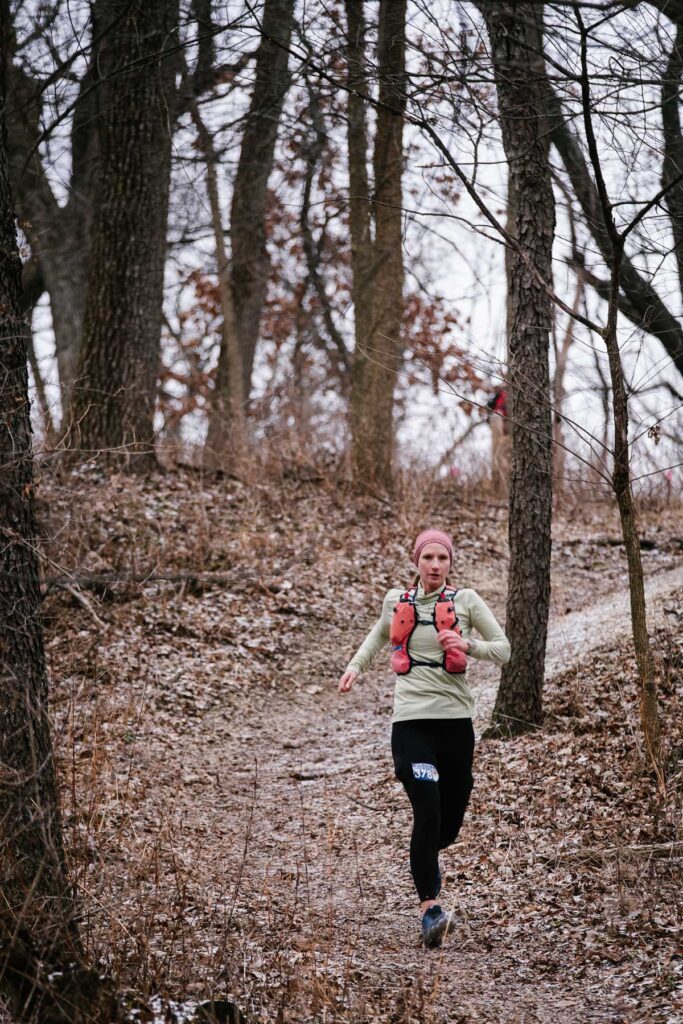


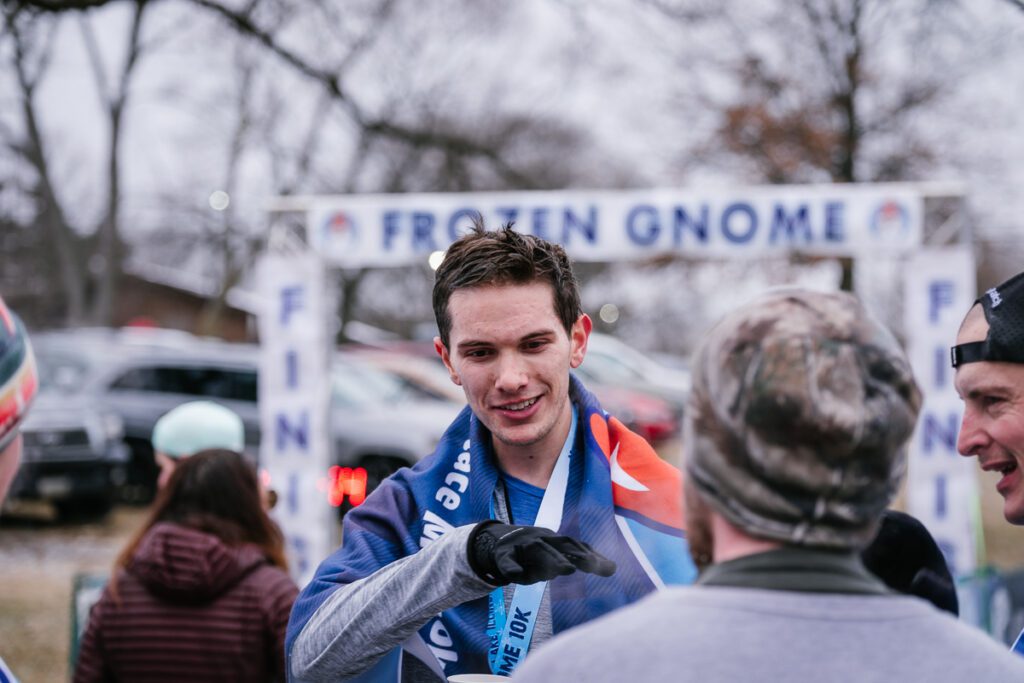

Photos: Tim Roberts @forbydigital
There was something about their oldest album which contained family pictures from the ancestral home in China to portraits of the two of them during their courtship and then from their marriage that intrigued me. Those early pictures ignited my imagination and evoked emotions that, as a young child, I couldn’t make sense of. But they fascinated me and I pulled those albums out every time we went to visit. So much so that my grandmother gave me the album containing the oldest photographs, a family heirloom that in her culture should have passed on to a male relative.

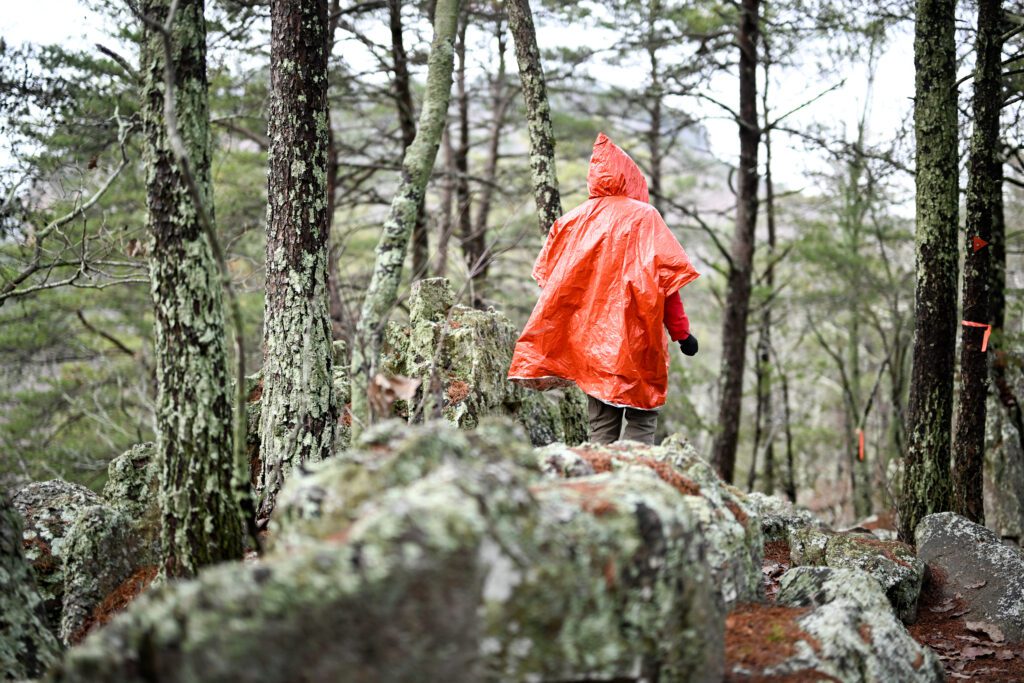
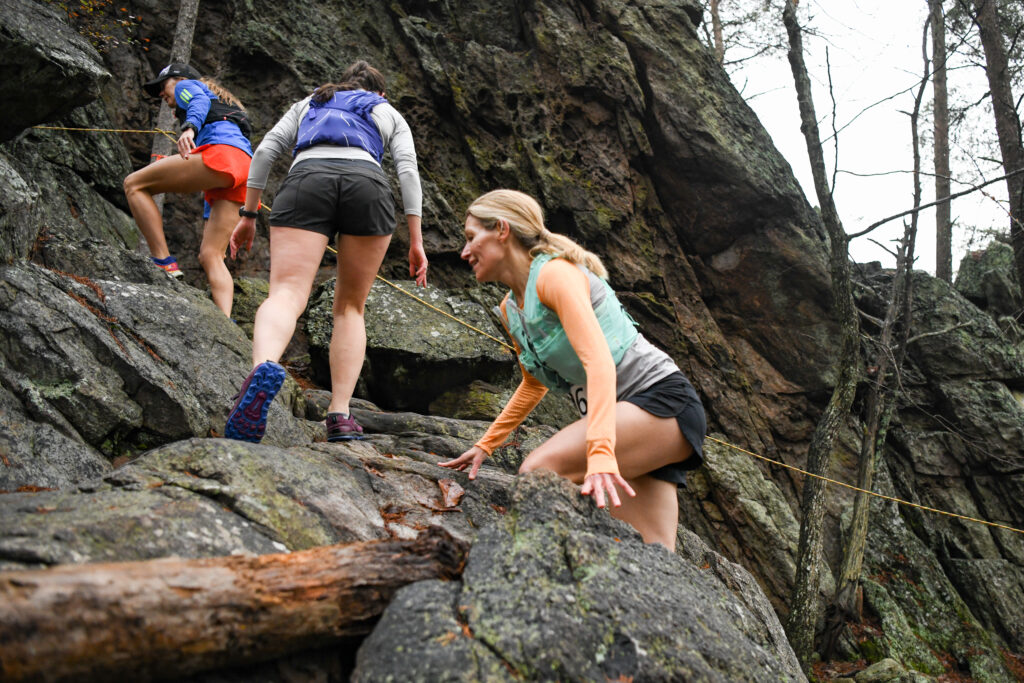
In sports/adventure photography, documenting an event seems to follow a different formula. As a runner, when I got proofs from a race, I always looked for certain things - do I look good? How’s my form? Do I look like I’m actually running in this picture? Was I even fast enough to get to the photographer before they left? I have a lot of pictures from the height of my racing days that checked all those boxes but in the end, were utterly forgettable. Conversely, I have a handful of pictures from trail races and ultramarathons where I look like I’m in a lot of pain or just filthy and gross, where I’m crawling or limping along, shoulders slumped, gaze downcast. And I remember exactly what I was thinking and feeling in those moments - that I was faking my smile because my hip felt like shit, or perhaps I felt like shit, but my smile was genuine because it was so uplifting to hear an encouraging word at that moment. Those are the images that remain seared into my mind.

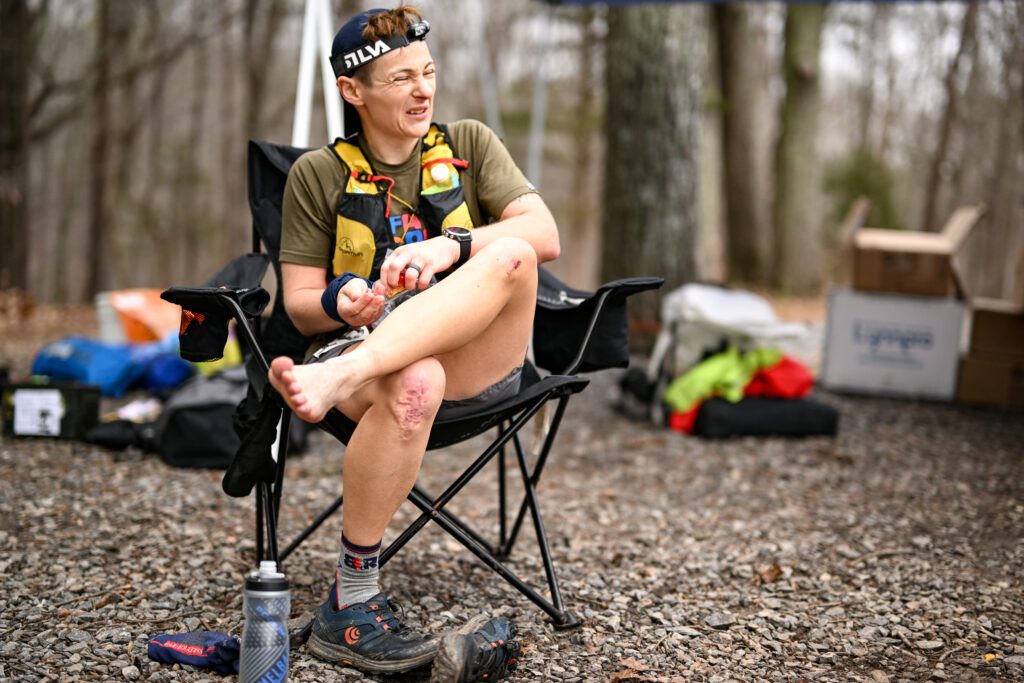
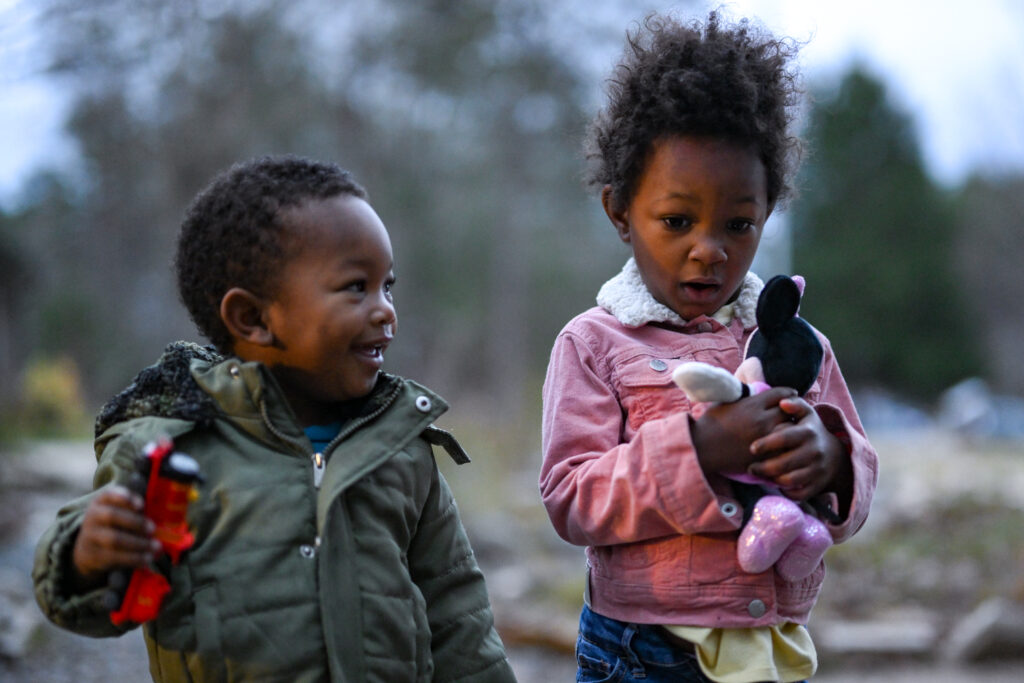
That’s what I try to capture in my photography. Less of an emphasis on looking like a model, and more of an emphasis on capturing the race experience. Something that, when the runner looks back on it, brings back the emotions and physical sensations from that moment or experience. Something that, when future generations look back on it, evokes a sense of wonder and curiosity. It’s not easy, and I’m a harsh critic of my own work. But every now and then, magic happens. And if it’s something that young Jenny would have reached for in a photo album time and again, that’s when I know I nailed it.


Jenny Thorsen is a writer and photographer living in Chicago's western suburbs. She is a regular contributor to Ultrarunning Magazine, Silent Sports, and Eat Clean, Run Dirty.